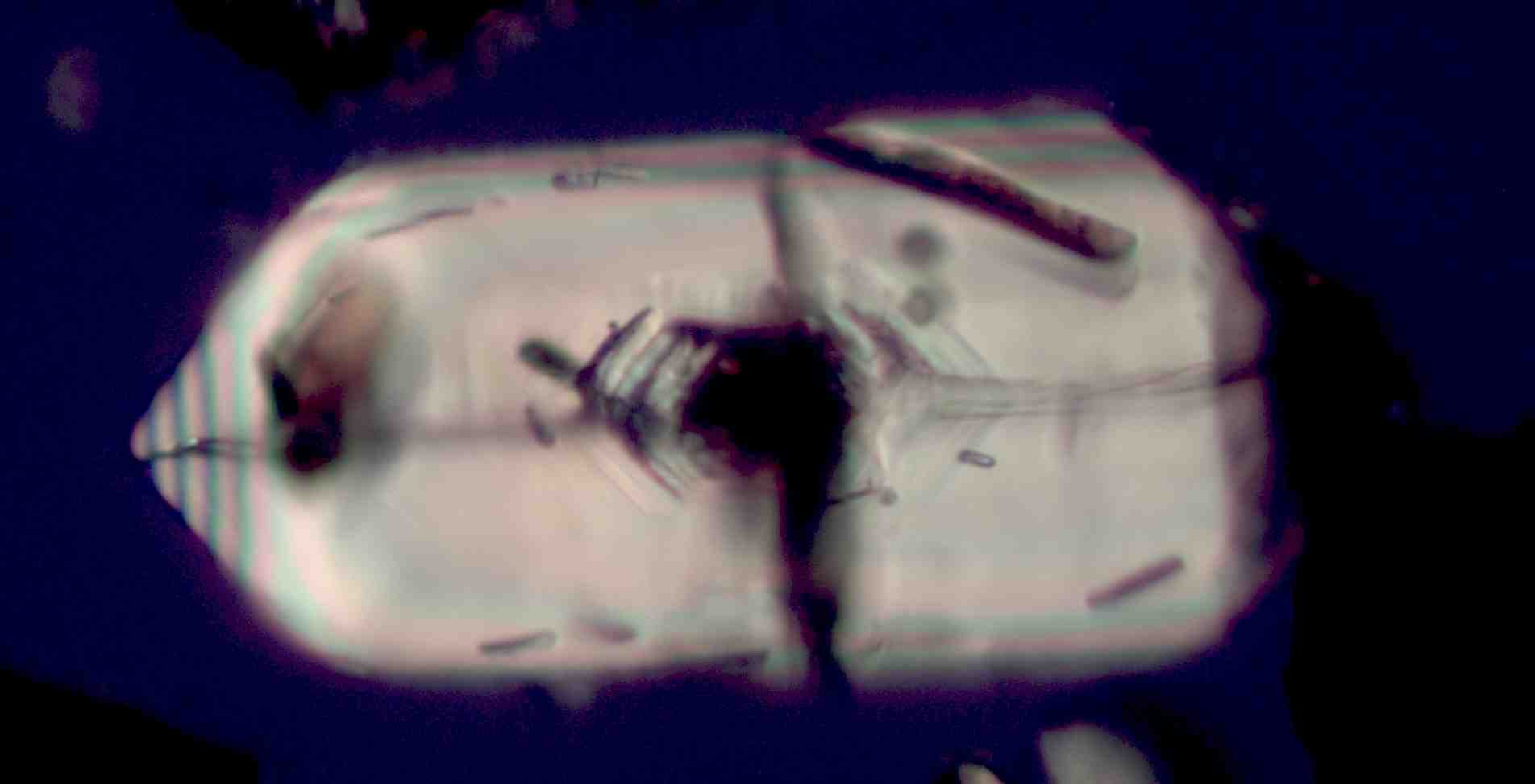Zircon
This zircon is from Lake Poway Park in Southern California. It is from a strandline in a dry creek bed. The core crystal (xenocrystic core) is rich in uranium and has cracked the outer crystal, lower in uranium, and turned quite dark. Growth zoning is visible extending out from the xenocrystic core.
Transmitted Circular Polarized Light
Wilde, Simon A., John W. Valley, William H. Peck, and Colin M. Graham, "Evidence from detrital zircons for the existence of continental crust and ocieans on the Earth 4.4 Gyr ago", NATURE, vol. 409, pp. 175-178, 11 Jan. 2001.
Hanchar, J. M. and C. F. Miller, "Zircon sonation patterns as revealed by chathodoluminescence and backscattered electron images: implications for interpretation of complex crustal histories", CHEMICAL GEOLOGY (ISSN OOO9-2541),PP. 1-13, 1993.
Bowen, Andrew, "Individualizing minerals: a proposed approach for forensic soil comparison", MICROSCOPE, vol. 55, no. 2, pp. 59-73, 2007.
Hanchar, J.M. and P.O.W. Hoskin, (ed.), ZIRCON, Reviews in Mineralogy & Geochmistry, vol. 53, 2003.
Definition/Function:
Zircon is Zirconium Silicate (ZrSiO4). It is a very durable mineral and some grains have been dated back to at least 4.4 billion years based on the decay of uranium included in the crystals matrix. The amount of titanium in the zircon indicates the temperature at which the crystal grew. The Oxygen isotope ratio is used to assess the nature of the environment at the time of the formation of the crystals.Significance in the Environment:
Characteristic Features:
Zircon belongs to the tetragonal crystal system and is optically positive. Its refractive indices are 1.922-1.960 and 1.961-2.015. Its birefringence ranges from 0.042 to 0.065. The density of Zircon is about 4.6 grams/cc. Small grains tend to be colorless. Zircons are often found in soils and sands as subeuhedaral to euhedral prismatic crystals or as rounded ellipses.Associated Particles:
Zircons are common in igneous rocks and in sedimentary deposits. It is one of the minerals used to characterize soils, sediments, and conditions at the time of formation and age of igneous rocks.References:
Deer, W. A., R. A. Howie, and J. Zussman, AN INTRODCUTION TO THE ROCK-FORMING MINERALS, ISBN 0-582-30094-0, pp. 22-6, 1992.Wilde, Simon A., John W. Valley, William H. Peck, and Colin M. Graham, "Evidence from detrital zircons for the existence of continental crust and ocieans on the Earth 4.4 Gyr ago", NATURE, vol. 409, pp. 175-178, 11 Jan. 2001.
Hanchar, J. M. and C. F. Miller, "Zircon sonation patterns as revealed by chathodoluminescence and backscattered electron images: implications for interpretation of complex crustal histories", CHEMICAL GEOLOGY (ISSN OOO9-2541),PP. 1-13, 1993.
Bowen, Andrew, "Individualizing minerals: a proposed approach for forensic soil comparison", MICROSCOPE, vol. 55, no. 2, pp. 59-73, 2007.
Hanchar, J.M. and P.O.W. Hoskin, (ed.), ZIRCON, Reviews in Mineralogy & Geochmistry, vol. 53, 2003.


